|
Their rebellion defeated, Black Hawk and Wabokieshiek surrendered to Colonel Zachary Taylor, future president of the United States, on August 27th, 1832. The two men and their "British Band" had been fighting against the terms of the Treaty of 1804, which required the Sauk and Meskwaki peoples to surrender most of their lands in the Midwestern United States. After Black Hawk's defeat, the U.S. government forced the Native American tribes to sign a another treaty, which obligated them to also quit Iowa and relocate to Kansas. Many Meskwaki refused to leave the state and others left only to later return a few years later. In 1856, Iowa passed a law allowing the Meskwaki to stay and they began buying land in Tama County, where they still reside today with 1,400 members and over 8,100 acres. However, Iowa was now part of the United States and the government offered it's land to settlers at $1.25 per acre. My Dad's great-grandparents took them up on the offer, leaving Indiana for Iowa between 1850 and 1860. Harpers & ShillitosOn February 28th, 1828, in Vermillion County, Indiana, 27-year-old James Madison Harper married 17-year-old Alice Shillito. There were no Methodist churches yet in the county, James and Elizabeth Harper Sr. would contribute the land for a church in 1846, so the ceremony may have been performed by circuit rider Rev. Warner in the Harper or Shillito household. The Harpers and Shillitos were pioneers, following the American frontier westward, building farms, mills, schools, and churches. When they had first arrived in Indiana, the state was wide open and sparsely populated, with less than 150,000 people. By 1851, it was a developed state with over a million citizens. As the years passed, James and Alice watched the land prices steadily rise and their children's opportunities steadily diminish. So they did what their parents did: sold their property, packed their possessions into wagons, and trekked west, this time to Iowa. James and Alice were accompanied by all of their children: Hiram, 22, James, 20, Edward, 18, William, 17, Mary, 14, Sarah, 12, and Elizabeth, 10. Also joining them were James' sister, Sophronia Hammersley, with her husband, George and their 4 young sons. Sadly, George Hammersley would die in 1860 and Sophronia and her children would return to Indiana soon afterwards. Following them to Iowa a few years later were the families of James' younger brother, Charles Harper, who would settle in neighboring Guthrie County, and Alice's younger brother, William Shillito, who would construct a saw mill just south of the Harper homestead, near Wiscotta, in Union Township. The Harpers arrived in Dallas County in March of 1851, during a long rainy season, which caused terrible flooding across the state. This was immediately followed up by a hot, dry summer and drought-like conditions. Undeterred, the Harpers claimed 3 tracts of land in Linn Township, just north of Redfield, totalling 280 acres. The red squares on the map above show the 3 different tracts of land of 40, 80 and 160 acres. The Harpers had an abundance of timber, access to good spring and well water, and fertile prairie land. On November 1st, 1852, James and Alice made payment for their stake and E.J.Terry, the Recorder of the General Land Office in Iowa City, issued them certificates 5010, 5011, and 5012. The Harper's closest friends in the area appear to have been the Cave family. John and Eve Cave lived with their large family near Wiscotta, a few miles south of the Harpers. James Harper had been born in Kentucky, but his family was out of Virginia so he may have had an affinity to the Virginia-born John Cave. Certainly, their children were friendly: Hiram Harper married Margaret Cave, Edward Harper married Elizabeth Cave, and Elizabeth Harper would marry grandson Andrew Jackson Cave. Nathan HethcotShortly before 1860, another of my ancestors moved to Linn Township. A young Nathan Wilson Hethcot arrived on the Harper homestead, seeking work as a farm hand. Nathan had moved alone from Wayne County, Indiana, leaving his parents and sibling behind, but he quickly found a new family with the Harpers. With their sons grown with farms of their own, in 1860 James and Alice certainly needed the help. They owned 200 acres of improved farmland and 100 acres of woodlands worth $3000. They also owned 10 horses, 4 mules, 6 milk cows, 14 working oxen, 21 cattle, 25 sheep, and 50 hogs, worth almost $900. The farm produced wheat, oats, Indian corn, potatoes, peas, beans, butter, cheese, wool, beef, and molasses. While working at the Harper's farm, Nathan appears to have learned the trade of carpentry. This is not surprising, since the family had a long history in the profession. Alice's father, Edward Shillito, had built and operated sawmills for decades, and her brother, William, was in the same trade only a few miles south. Also, in 1855, the eldest Harper son, Hiram, had moved to Guthrie County and set up a sawmill on the property of his brother-in-law and business partner, Addison Cave. Mary Jane Harper & Nathan HethcotThe eldest daughter of the Harper clan, 23-year-old Mary Jane Harper, was a little older than Nathan and had grown up with four older brothers so it’s easy to imagine that she was no shrinking violet in expressing her interest in the young newcomer. Regardless of how their relationship developed, Mary married Nathan on March 10th, 1861. The wedding was likely at the Harper home, possibly performed by a Methodist circuit rider, since local Methodists would not establish a church in the township until 1869. Mary was pregnant almost immediately after their marriage, giving birth late in the autumn. Sadly, their infant son died on Christmas Eve, before he was named, and he was buried in the Harper cemetery near Redfield. Despite this tragedy, Mary was pregnant again a few months later and gave birth to Alice Belle Hethcot on February 21, 1863. Her second child, James Madison Hethcot, was born 19 months later on October 17, 1865. The American Civil War began in 1861 and many local men enlisted to fight. However, while Nathan and his Harper brothers-in-law registered for the draft in 1863, they were farmers with young families and none were ever called for service. In a fit of patriotism, Mary and Nathan named their next child, born November 18th, 1866, Benjamin Franklin Hethcot, after the founding father and famous abolitionist, while Mary’s brother, James, named his son William Tecumseh Sherman Harper. The growing Hethcot family lived with James and Alice on their farm while Mary’s siblings spread out to their own farms throughout Dallas and Guthrie counties. In this time, there was as much heartbreak as joy. Edward Harper died in 1864, leaving a widow and 2 young children. Fortunately, they lived very close to James and Alice and could keep their farm going with family help. James Harper died on May 18th,1869, at the age of 68. A successful farmer, he left all his property to support Alice, to be divided thereafter among his remaining children and the widow of his deceased son. Six months later, Mary Hethcot, gave birth to her third child, Sarah Elizabeth Hethcot, on November 3rd, 1869. James would be buried at the Harper Cemetery in Redfield, Iowa, near his son and grandson. In the summer of 1870, the Hethcots continued to live with Alice on the farm but she had already divided up much of the land, giving Nathan and Mary real estate worth $3000. If a mix of improved and unimproved land, this might have represented as much as 200 acres. They all continued to live on the Harper farm together until Alice, 61, remarried to John Shieckle, a 60 year old Englishman, on April 2nd, 1871. They would remain married 14 years, until Alice's death on September 10th, 1884. A little over 3 months after Alice's wedding, Mary gave birth to Cora Emaline Hethcot, or Emma, on July 24th, 1871. Not very long after the birth of their daughter, the Hethcots sold the farm and journeyed west to Nebraska, enticed by promises of cheap land. Conditions were far more challenging in Nebraska than it had been in the early days of Iowa and Indiana. Timber was scarce or non-existent so families lived in sod houses and used buffalo chips for fuel. With no wood for barns or fences, livestock roamed free, grazing on the scraggly winter grass. Then, on Easter Sunday, 1873, a disastrous winter storm devastated Nebraska. A.D. Williams of Kenesaw gave this account: "Everything movable hurried away most unceremoniously. The air became immediately filled with dust, so thick and whirling and blinding, sight could not penetrate half a rod away, and persons in the house could not see each other even before the window. The roar of the elements was almost deafening. People rushed to their north windows to keep them from blowing in, keeping them in place by their hands and bodies. In some instances they were not kept in and the house filled with wind and the roof and sometimes the whole structure went before the storm like feathers. " The storm may not have only damaged the Hethcot homestead but killed much of their livestock. As with every trial in the last several years, Mary endured it while pregnant. Two months later after the storm, she had another son, Timothy William Hethcot, on June 30th, 1873. However, events had convinced the Hethcots that Nebraska was not for them and they again returned to Iowa, first to Penn Township in Guthrie County, where Henry Harrison was born on September 27th, 1878, and Esther Mae was born November 18th, 1881, and then Spring Valley Township in Dallas County. Nathan primarily farmed but he also worked as a carpenter, a trade also adopted by two of his sons. In 1887 and 1888, he was noted for repairing a bridge crossing Beaver Creek, building a bridge near the school house and travelling out to Nebraska to build bridges. He was also apparently a Republican: “The day was introduced by the firing of anvils, thus forcibly announcing that the Republican were alive to their interests and their cause. The raising of the pole was the only thing on the programme for the forenoon. That was so neatly, quietly, and speedily done by Mr. N Hethcot, that people viewed with wonder and admiration the skill displayed in executing difficult job. In two minutes from the time the first command was given the 100 foot pole was crest, pointing to that realm from whence few Democrats ever look down.” Nathan knew little of his own family history or perhaps he evaded it. For the first time in 1880, the U.S. census asked for the birthplace of parents and Nathan claimed his father had been born in Kentucky, which was where James Harper had been born, not his own father. On subsequent censuses, Nathan claimed that his father had been born in Scotland and his mother in Ireland. In reality, his parents, Mark Hethcote and Alice Jones, had both been born in North Carolina, where the Hathcocks had lived for generations. Nathan and Mary appeared to value education, as the children all attended school until their 17th or 18th birthdays. When their daughter, Emma, was older and the teacher was absent, she was sometimes called on to teach the class. The Hethcots relocated to Spring Valley Township, Dallas County, Iowa sometime after 1881, when Emma was 12 or 13 years old. Living nearby was the family of Nelson Simpson and Rachel Woods, which included Emma's husband, Thomas Nelson Simpson. Woods & RitchhartJames Alexander Woods and Aumain (Anna) Ritchhart had married and started their family in Ohio, before moving to Michigan and then settling in Indiana about 1833. The Woods lived in Benton Township of Elkhart County for 20 years, raising 9 children to adulthood. Although James had been born in Ross County, Ohio, which would later become Pickaway County, the Woods family had come out of Virginia in about 1805. James’s grandfather, Anthony Hall, had bought the first mills in the county and some of his children, grandchildren, and even great-grandchildren would continue the trade of building and running saw and grist mills. Meanwhile, Anna had grown up speaking German, her Swiss born father having immigrated to Pennsylvania and fought in the Revolutionary War before also relocating to Pickaway County, Ohio. The Scots-Irish and German peoples of Ohio mostly lived apart from in those days, each group in their own communities, separated by gulfs of language, customs, and religion. However, the Woods and Ritchhart were close, with James marrying Anna and his sister, Rachel Woods, marrying Anna's 1/2 nephew, Abraham Ritchhart. Tragedy struck the family in 1853, with the death of James and Anna's third child, Samuel Woods, who died when he was one month shy of his 22nd birthday. He may have died by accident or from the epidemics of cholera that took so many at this time in Indiana. Very soon after, the family left Indiana forever, heading west to Iowa. The eldest Woods son, Isaiah, decided to remain behind in Indiana, although he would head west to Iowa several years later, but all the remaining children accompanied their parents:
The Woods family arrived in Elkhart Township, Polk County, Iowa early in 1854 and settled near the Hamlet of White Oak Grove, James acquired 260 acres of land and the family went to work building a farm. By 1860, James had split off 90 acres for his son, James Jr. Between the two of them, they had developed 100 acres of the land. James Sr. owned 6 horses, 3 milk cows, 3 cattle, 3 sheep, 15 swine and kept bees for honey, He grew wheat, Indian corn, beets, oats, and potatoes. He turned the beets into molasses and likely used that to distill his own alcohol. The SimpsonsWith 2 young children in tow, Clement Simpson and Minty Dutton had left Delaware in 1818 and settled in Pickaway County, Ohio. When Clement died in 1838, at the age of 60, Minty and her 6 children, who ranged in ages from 9 to 24, moved to Wayne Township, Tippecanoe County, Indiana. Sadly, Minty died 6 years later, at the age of 56, leaving her children to look after each other. The four eldest Simpson siblings, Thomas, Emery, Comfort, and Mary, flourished in the township, marrying and building up large farms. Nelson was only 18 when he was orphaned. In 1850, he was not living with any of any of his siblings, or even appearing on the census at all, so he was likely traveling about the region, working farm or trade jobs. The youngest sibling, Amelia, who was 15 when her mother died, found herself pregnant and alone in 1851. Fortunately, her oldest sister, Comfort, who was unable to have children of her own, adopted the child and looked after Amelia. Comfort and husband, Christian Roop, would later adopt 2 other young children. By 1855, three of the Simpson siblings and their families decided to strike out for Iowa.
The sisters and their families settled in Spring Valley Township, Dallas County, Iowa by the spring of 1856. That autumn, Amelia married Willis Council, 3 years her junior. Rachel Woods & Nelson SimpsonWhether Nelson traveled to Iowa with his sisters or was simply working his way in that direction, he came across the farm of James and Anna Woods. Since the Simpson and Woods families both lived in Pickaway County, it's likely that they were acquainted with the same people and the Woods welcomed Nelson into their home. As we've seen before, the young farmhand met the farmer's daughter and romance ensued. Nelson, 31, and Rachel, 24, married on January 10, 1858. The newlyweds soon moved away from the Woods clan, temporarily settling in Fremont County, where Nelson worked as a carpenter. They were joined by Rachel's younger brother, 20 year-old John Lewis Woods, who described his profession as a farmer, although with no land he likely worked as a laborer on surrounding farms. Rachel gave birth to their first child, James Clement Simpson, on August 20th, 1860. The Civil WarWhen the United States Civil War erupted in 1861, Nelson was 35 with a wife and child who depended on his labor and so did not enlist. However, Rachel's brother, John, was 21, unmarried, and full of patriotic fervor. On June 8th, 1861, he enlisted as a private in Company E of the 3rd Iowa Volunteer Infantry Regiment. His younger brother, Joseph, followed in his footsteps and joined Company K of the 16th Iowa Volunteer Infantry Regiment on February 25th, 1862. Both these regiments joined the Army of the Tennessee under the command of General Ulysses S. Grant. On April 6th, 1862, Confederate forces launched a surprise attack against the army at Pittsburgh Landing on the Tennessee River, commencing the Battle of Shiloh. John survived the bloody 2-day ordeal, which saw over 3,500 men killed on both sides, only to be killed the next day, on April 9th. He was buried in a farmer's field but then later exhumed and interred at the Shiloh National Cemetery. Joseph would survive the battle and continue to fight for the Union, participating in many bloody battles under the command of Grant and then General William T. Sherman, before finally being discharged on July 19th, 1865. After the war, Rachel's older brother, James Jr, would name a son Ulysses Simpson Grant Woods. Spring ValleyBack in Iowa, Nelson and Rachel had another child; Rachel delivered Emery Joseph Simpson on November 6, 1863, named after Nelson's older brother and Rachel's younger brother, still fighting in the war. Soon after the war, Rachel gave birth to a 3rd son, Charles Christian Simpson, possibly named after her maternal grandfather. Sometime in this period, Nelson and Rachel decided to join his sisters in Dallas County, as did his older brother Emory, reuniting most of the siblings. The oldest sibling, Thomas, may have lived for a while in Iowa but he was soon off to Nebraska. In 1860, Nelson and Rachel only owned $200 of real estate and $50 of personal property but by 1870 they owned $1700 of real estate and $1125 of personal property, possessing 85 acres, 3 horses, 8 milk cows, 4 cattle, and 17 swine. They grew spring wheat, Indian corn, and Irish potatoes and churned up to 700 pounds of butter per year. They also owned an apple orchard: 4 acres with 275 trees, from which they harvest 50 bushels of apples, some of which they likely distilled into cider. As they built up their farm, they also grew their family, adding Thomas Nelson on July 27th, 1868, Anna Elizabeth on August 2nd, 1870, and Francis Leslie on November 25th, 1873. In Dallas County, their children grew up surrounded by family, having no less than 23 first cousins in the area. Although the property of Nelson and Rachel Simpson is not marked on this 1875 map, their brother-in-law, Christian Roop, is recorded on the west side of the township and L B Thornburg would become their oldest son's father-in-law: on November 2, 1882, James Clement Simpson would marry Martha Anna Thornburg. The Simpson siblings would remain together for many years, before some moved on yet again. This is the only picture of all of them, omitting Thomas, who was in Nebraska. The photo was likely taken in 1879 or earlier, since Emery is in California by 1880.
With the arrival of the Hethcots in 1881, Nelson's son, Thomas, my great grandfather, would have first encountered his future wife, Emma. Since the township had a population of less than a thousand people and they were only 3 years apart in age, it's likely that Thomas and Emma met each other several times in next few years, although it's impossible to guess how they first regarded each other. NebraskaEmma and Thomas would not form their romantic attachment in Iowa, however. In 1884 or 1885, Nelson and Rachel sold their property and headed west again with all their children to Phelps County, Nebraska. Nelson would leave behind his 3 sisters and many nephews and nieces. Rachel had buried her mother on June 5th, 1883 but she was leaving behind her 78 year-old father, who lived alone but beside the family of Rachel's youngest sister, Lucy Keller. James Woods would pass away on March 22, 1886. This journey west would be very different than the Hethcots earlier attempt to settle in Nebraska. The Burlington Railroad now stretched across Nebraska and the Simpsons could ride the rails right to Holdrege, in the southernmost portion of Phelps County. The railroad would also mean that they were not completely leaving their family behind; visits back to Iowa were a matter of a few days. Thomas and Emma may have met again a few years later at the wedding of Emma's older sister, Sarah, to Thomas's cousin, William Council. At this time, the 20-year-old Thomas and the 17-year-old Emma likely saw each other in a whole new light and began a correspondence. Almost immediately after hosting the wedding of his daughter, Nathan Hethcot traveled out to Nebraska to build a bridge there. This visit may have hooked him on Nebraska again because Nathan and Mary Hethcot would take another chance on the state, purchasing 400 acres near O'Neal in Holt County, Nebraska. Although the Hethcots and Simpsons still lived far apart in Nebraska in 1890, Emma and Thomas were clearly still in contact and their relationship was getter serious. On a cold winter day, 19-year-old Emma boarded a train to travel to Holdrege, where she married 22-year-old Thomas at the home of Justice George Rhea on December 21st, 1890. Whether this was an elopement or not, their marriage closed the Iowa chapter of my family history and open a new, somewhat shorter, chapter in Nebraska,
The Davis surname is a patronymic meaning "son of David", which originated in Wales in the last few centuries. Permanent surnames were late to take hold in that nation, where men and women traditionally had only a given name followed by the name of their father. A woman whose father was named David would be called "Emma ap Dafydd". After the Laws in Wales Acts of 1535 and 1542, English officials worked to harmonize Wales with England, making English the official language and gradually impressing surnames on the people. Usually the Welsh would simply adopt a variation of their patronymic as their surname, adding an "s", with "son of John" becoming Jones and "son of David" changing to Davies or Davis. Interestingly, the name "Davies" is more common in Wales but as you move into England, Wales, or North America then "Davis becomes more common.
Also, sometimes English officials would record the surname as the closest sounding English name so some names typically regarded as Welsh can have Saxon or Norman roots. The challenge for genealogy is that the children of hundreds of unrelated Davids each created a new Davis family. Meanwhile, our distant David ancestor had a brother named John, whose children created a family surname of Jones, to whom we are related. This means that when looking for a distant cousin, his name is as likely to be Jones as it is to be Davis. My Davis family traces back to County Wexford, Ireland. Not surprisingly, our family historians believe the Davis family originated first in Wales before migrating to Ireland. Well, my cousin, Barry Davis, took a Y-DNA test that might prove that. In genealogy, DNA testing is only valuable in the relationships it uncovers. Y-DNA tests look deeply but not broadly. When you consider your 5x great-grandparents, only 1 of the 128 is on your direct paternal line. And the cousins with whom you share Y-DNA are those men who also have a direct paternal line to him. This amounts to an miniscule percentage of your cousins. However, unlike autosomal DNA, which can only identify perhaps 4th or 5th cousins, Y-DNA can reveal 10th, 20th, and 100th cousins. So most of the cousins that Y-DNA testing reveals are only very distantly related, unless we recruit known or possible cousins to test to prove a relationship. Happily, in this case, Barry's closest Y-DNA matches are surprisingly closely related, and may share a common ancestor only 8 to 10 generations back, if not closer. The haplogroups of those men are L21, the native British "Celtic" haplogroup. L21 is found throughout the British Isles so that alone doesn't tell us much except that the distant paternal line was very likely not Saxon, Norman, or Viking but lived there before the Romans. Examining Barry's matches, we see exactly what we would expect to see of a paternal line that traces back to Wales. Here are the surnames of his matches: Humphrey (Welsh): there are 4 men on Barry's match list with this surname, the closest an exact match, meaning he is very likely to be related within 8 generations, probably closer. While Humphrey is a Norman name, these Humphrey men do not have a genetically Norman paternal lineage. It is likely that English scribes translated a Welsh name into most similar sounding English name. These Humphreys appear to be relatively closely related to each other and trace their paternal lineage back to Massachusetts in the 17th century. Jones (Welsh): there are 15 men with this surname on the list, with the closest Jones match probably related within 6 to 12 generations but most of them are probably not even closely related to each other. Several of these Joneses trace their paternal lineage to Ireland while a few others go back to different parts of the United States. Meaning son of John, this is the most common surname in Wales. Davis (Irish/Welsh): there are 6 men with this surname on the list. Those with ancestor information also trace their paternal lineage to Massachusetts, back in the 18th century. It's difficult to determine exactly how closely these Davis men are related. It's possible that some descend from different David ancestors and are related more distantly. There are a number of other surnames, such as Cox (English), Watkins (Welsh), Moynes (Scottish), Powell (Welsh), Hughes (Welsh), Price (Welsh), Bridges (English), Stickles, Morton (Scottish), etc. If we weren't before, I believe we can be certain that the Davis line goes back to Wales. However, other than the few closest matches, it's really hard to tell how closely Barry is related to some of these men. The next step is to see if the genealogy of any of these men might cross paths with our Davis family history. |
Archives
2023 JAN FEB MAR APR MAY JUN JUL AUG SEP 2022 JAN FEB MAR APR MAY JUN JUL AUG SEP OCT NOV DEC 2021 JAN FEB MAR APR MAY JUN JUL AUG SEP OCT NOV DEC 2020 JAN FEB MAR APR MAY JUN JUL AUG SEP OCT NOV DEC 2019 JAN FEB MAR APR MAY JUN JUL AUG SEP OCT NOV DEC 2018 JAN FEB MAR APR MAY JUN JUL AUG SEP OCT NOV DEC 2017 JAN FEB MAR APR MAY JUN JUL AUG SEP OCT NOV DEC 2016 JAN FEB MAR APR MAY JUN JUL AUG SEP OCT NOV DEC 2015 JAN FEB MAR APR MAY JUN JUL AUG SEP OCT NOV DEC 2014 OCT NOV DEC Categories |
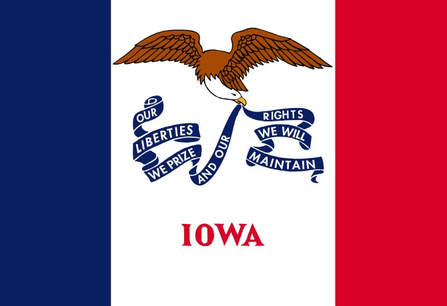

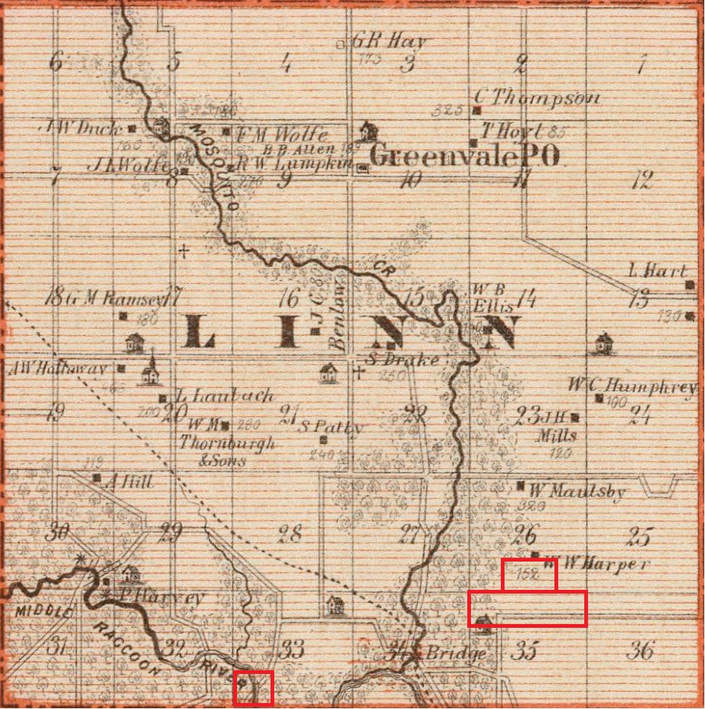
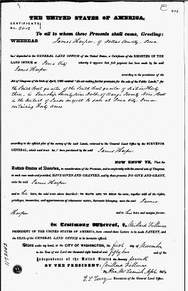
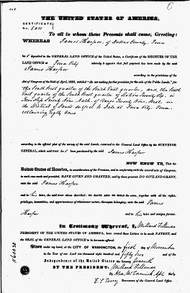
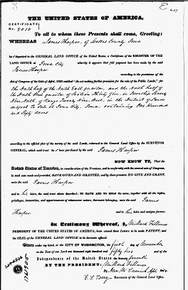
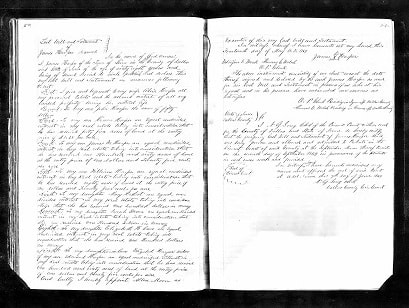

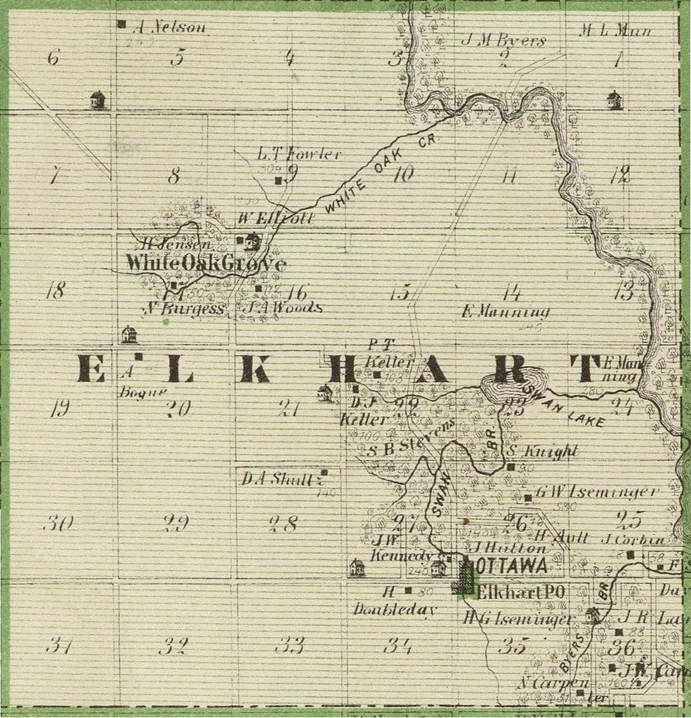
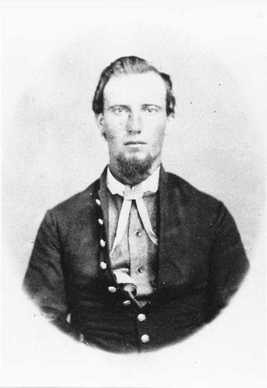
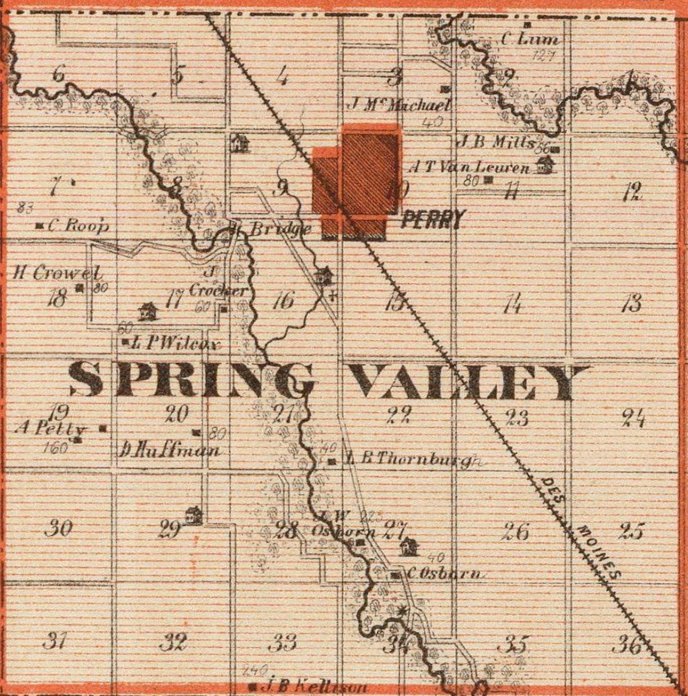
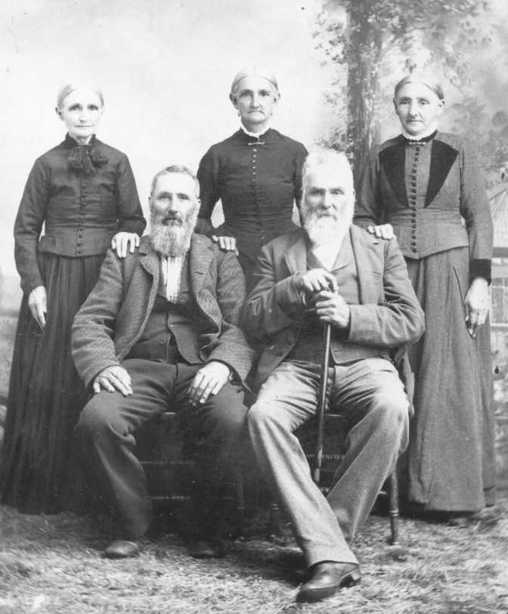
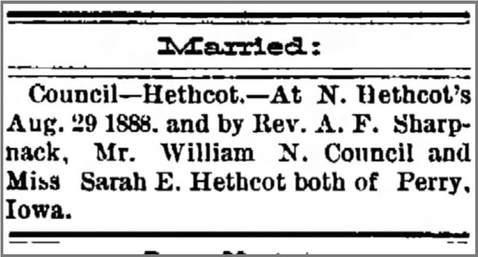
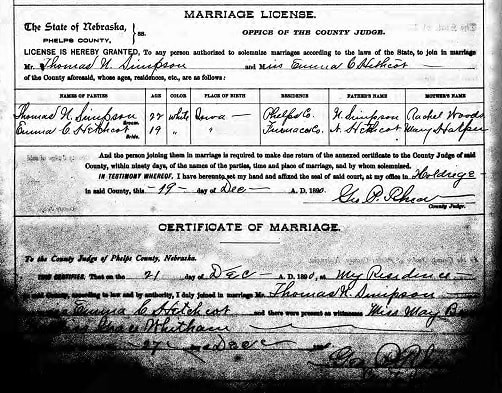
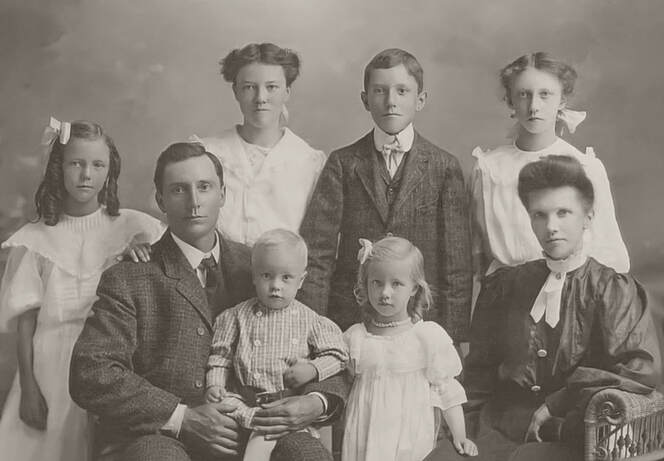
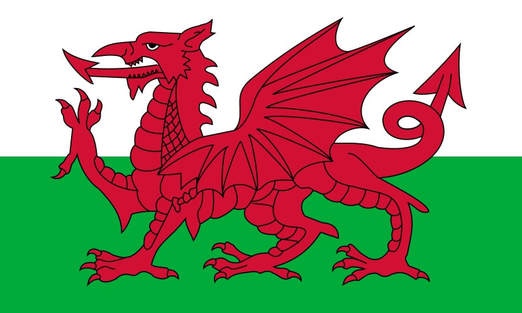
 RSS Feed
RSS Feed